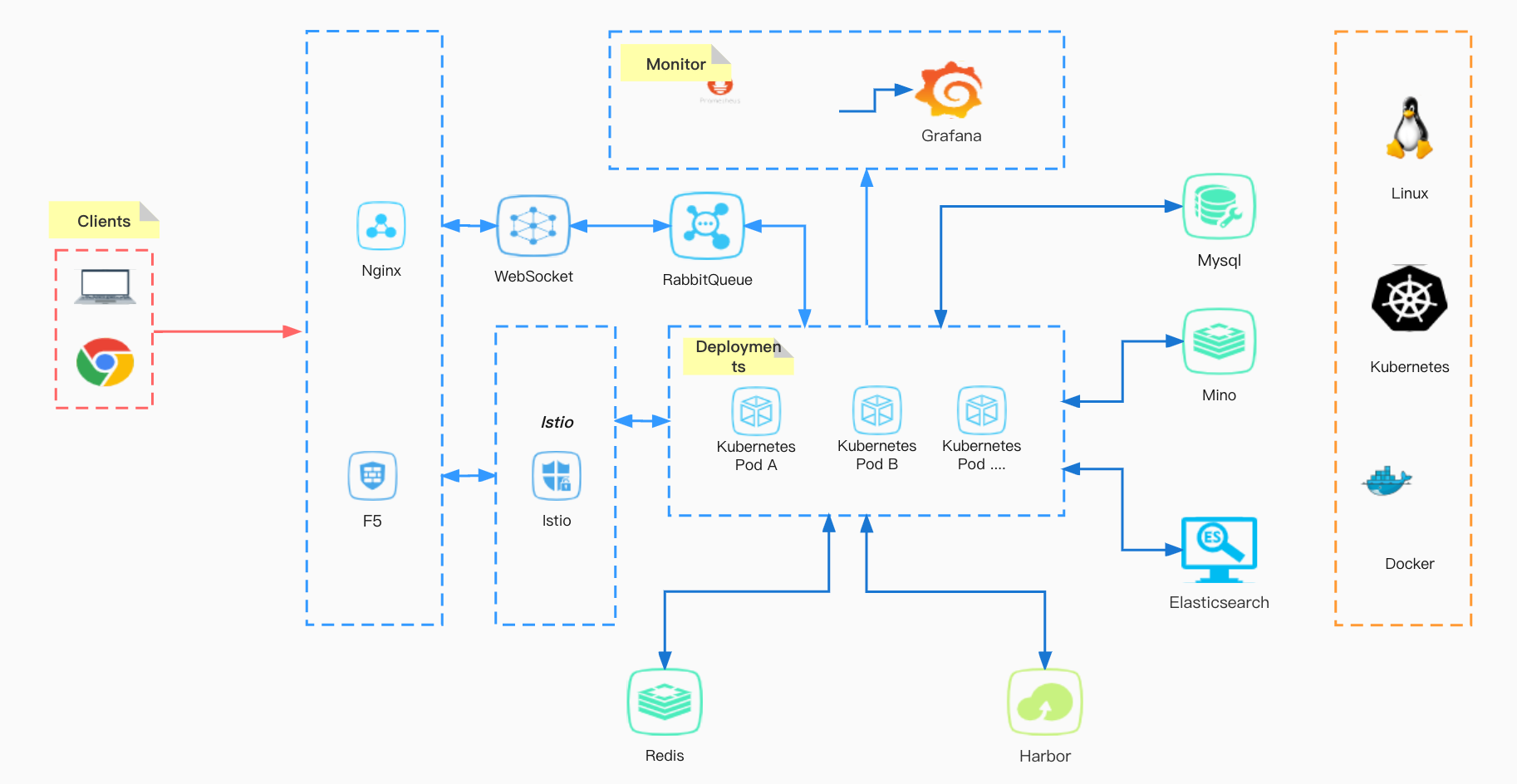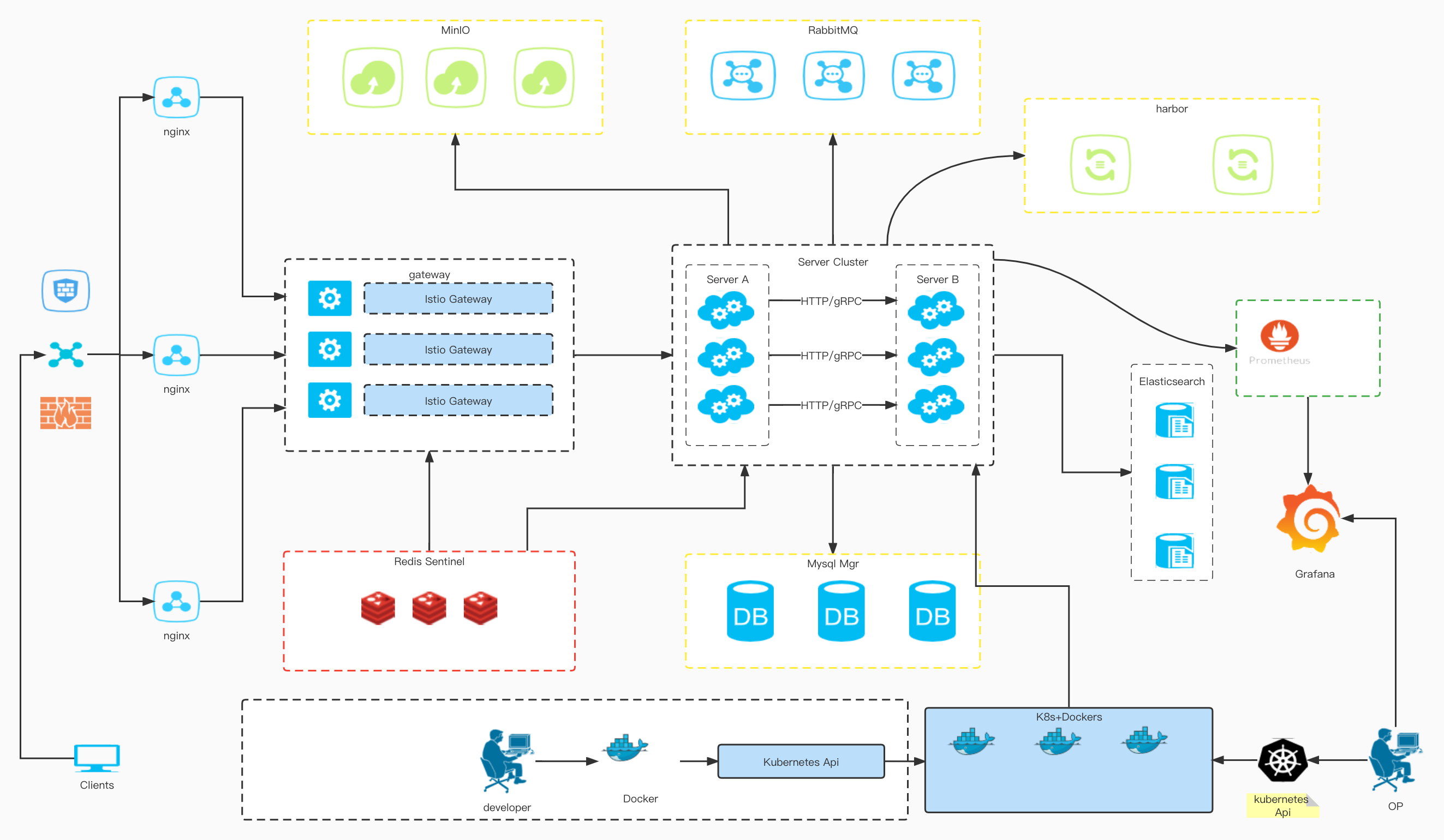About installation
Stand alone deployment
As the name suggests, stand-alone deployment is to deploy all services on one server.

The biggest advantage of this deployment mode is that it is simple and fast, and the server resources and operation and maintenance costs are low. But minimalism also has a big disadvantage: low availability. If the server hardware fails, the whole service will be unavailable and even data will be lost. It will make the business unable to use normally.
The scheme is applicable to small and medium-sized businesses, POC environment, UAT environment and dev environment. For example, the number of robot is less than 20
Customers need to provide cloud servers or virtual machines
Multi node deployment
As the name suggests, multi node deployment will evenly deploy services on node servers, that is, the role of nodes is divided into master and running nodes. When the number of nodes is greater than or equal to three, we will set three of them as master nodes and the remaining nodes as node nodes. When the number of nodes is exactly equal to three, the roles of the three nodes are both master nodes and node nodes. Ideally, middleware services should run on the master node, while application services should run on the node node. Of course, this is not mandatory.

The biggest advantage of this deployment mode is that it can form a set of It is similar to a cluster with high availability, but it cannot completely guarantee high availability . This mode allows one of the nodes to be down. After the node is restored, you may need to do some manual operations to restore the node to the cluster.
Of course, the biggest disadvantage of this deployment mode is
- The operation and maintenance cost is high. A certain container operation and maintenance foundation is required
- Server resources are high. The cost of using resources is more than three times that of a single machine
- Load balancing is required. Agent configuration needs to be done in advance
- Long installation time. Because the deployment package content distribution is involved, the installation time will be longer
This scheme is applicable to scenarios with certain requirements for data security. The number of robot is less than 100.
Customers need to provide cloud servers or virtual machines and load balancing addresses
Extension deployment, no commitment to high availability.
If customers have high availability needs, they need to provide middleware services such as MySQL and redis.
High availability deployment
If your business requires high availability of services, you can contact our salesperson Customized high availability scheme
This scheme is applicable to core businesses or robot. The number is greater than 100, and it can be customized and deployed according to the customer's environment.
Promise high availability (no higher than the availability of the customer environment), which is determined according to the actual environment of the customer
Customers need to provide cloud servers or virtual machines and load balancing addresses
It is supported by the original factory engineer and charged separately
info
The high availability deployment plan should be implemented in the solution stage
Multi node deployment and high availability deployment provide monitoring functions. High availability deployment requires the cooperation of customers to configure alarms
The availability is limited to the service-side products, excluding the availability of Process and clients
Except for high availability deployment, it can be used for referenceInstallation documentdeploy
How to distinguish deployment modes?
Standard deployment
- You can use the private deployment automation script to complete the deployment with one click
- After deployment, it is not required to adjust the deployment architecture, such as the separation of middleware and applications, the addition of a backup cluster, and so on
Customized deployment
- Non standard deployment
- Customers clearly require commitment to high availability
- It needs to adapt to the customer's basic environment, operating system, etc., such as deploying to the customer's k8s environment
Refer to the following examples:
Customers do not require high availability, but need to connect their own middleware
The middleware version provided by the customer meets the version requirements of the standard deployment, and can be adapted by modifying the configuration file during the deployment process.Subordinate to standard deployment.The middleware version provided by the customer does not meet the version requirements of the standard deployment. For example, providing the modified customized middleware restricts the command execution. The version is too low or too high. This kind of middleware is prone to problems even after it is completed.It belongs to customized deployment.The middleware version provided by the customer is cloud environment, such as Alibaba cloud mysql, OSS, etc.Subordinate to standard deployment.The customer's own system environment has k8s environment, so it is required to deploy services to the customer's k8s environment
This situation cannot be deployed automatically, and it needs to be deployed manually in the customer environmentIt belongs to customized deployment.The customer provides a physical machine, but there is no GPU driver or the Device is not formatted and mounted, etc
Installing the operating system or graphics card driver is not within the scope of standard deployment, but relatively speaking, it does not require too many resources, so the overall demandSubordinate to standard deployment.